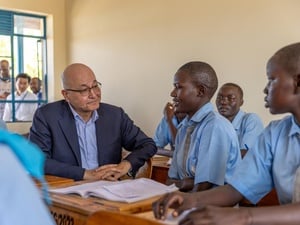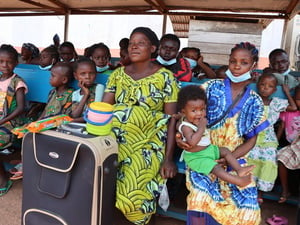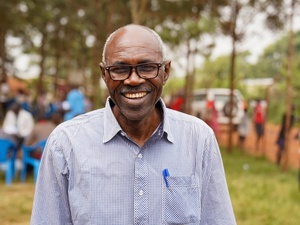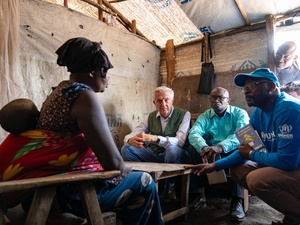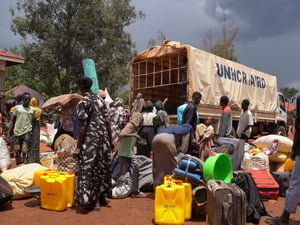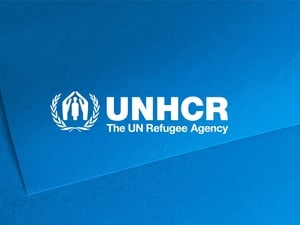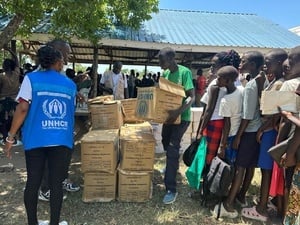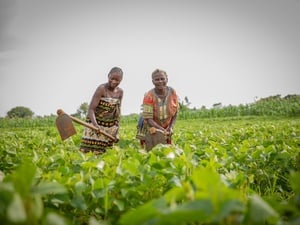Fresh Congo violence fuels displacement to Uganda
Fresh Congo violence fuels displacement to Uganda

Young refugee children from the Democratic Republic of Congo walk to school in Kyangwali Refugee settlement in Hoima District on August 8, 2017.
UNHCR, the UN Refugee Agency, is witnessing a sharp rise in the number of people from the Democratic Republic of the Congo (DRC) seeking safety in Uganda.
More than 2,650 refugees have crossed the border this week, fleeing fresh violence in DRC’s Ituri province – five times the usual number of arrivals. Most of them are women and children.
The majority of refugees cross Lake Albert on rickety fishing vessels to arrive to Sebagoro, a village some 270 kilometres northwest of the Ugandan capital Kampala. About 650 refugees arrived in two boats this morning, carrying valuable belongings such as motorbikes and livestock.
This route is being used by a large number of refugees for the first time after a tragic shipwreck in 2014 that left over 200 dead.
The new arrivals to Uganda are reportedly fleeing intercommunal violence at Djugu territory. Since Monday, there were reports of houses being scorched in the area, and people attacked with machetes and firearms.
More than 20 villages were abandoned due to the fear of reprisals. Services have been paralysed and panic engulfed the population.
Refugees report that many more people are gathering on the Congolese side of Lake Albert waiting for their turn to cross, despite the journey’s high cost.
Inside Uganda, UNHCR is stepping up its capacity to meet the refugees’ needs. We are supporting the authorities to receive the new arrivals and transfer them to Kyangwali settlement, some 50 kilometers to the east. There, refugees are registered, medically screened and provided with hot meals and basic relief items.
UNHCR works in the settlement to identify and assist persons with specific needs, including unaccompanied and separated children, survivors of sexual and gender-based violence, pregnant women and persons with disabilities.
However, with UNHCR’s operation in Uganda funded only by 39 per cent, more resources are urgently needed to upgrade the reception capacity and assist the new arrivals. This is particularly important, given that Uganda already hosts the largest number of refugees in Africa – some 1,4 million overall.
Among them, the number of Congolese reaches 231,500. Most have fled violence in North Kivu, a region plagued by chronic instability in DRC’s east.
In total, the number of Congolese refugees in neighboring countries has increased by almost 100,000 people in the space of one year, reaching over 623,000 by end November.
In their majority, Congolese refugees are hosted in Uganda, Rwanda and Tanzania, with significant flows occurring during 2017 to Angola and Zambia. Refugees add to some 4,1 million internally displaced Congolese, rendering DRC the country with the highest number of displaced people in Africa.
For more information on this topic, please contact:
- In Kampala, Rocco Nuri, +256 779 663 793, [email protected]
- In Kinshasa, Andreas Kirchhof, +243 817 009 484, [email protected]
- In Geneva, Aikaterini Kitidi, +41 795808334, [email protected]


